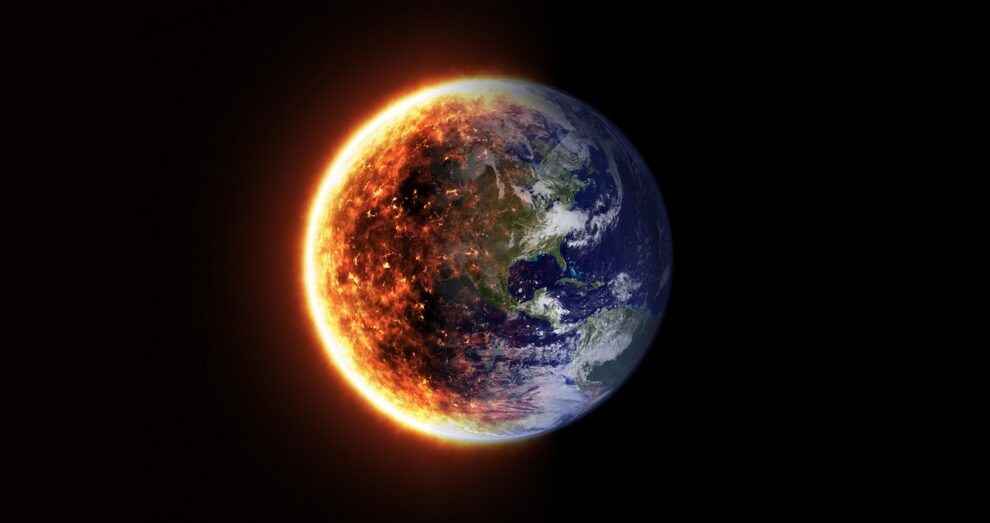Recently, our planet experienced a significant solar storm, labeled as “severe” by government authorities, ranking it second highest on NOAA’s scale. This event caused a notable disruption in Earth’s magnetic field, CBS News reported. It potentially affected infrastructure and extended the visibility of the northern lights beyond their usual range, according to officials.
Severe solar storm alert extended – authorities advise to stay alert
The ongoing geomagnetic activity presents both challenges and a rare chance to behold the stunning Aurora in regions of the U.S. where it’s seldom visible, Earth.com reported. This phenomenon underscores the interconnectedness between space and our planet, underscoring the significance of monitoring and readiness for space weather occurrences.
Areas like northern Michigan and Maine may have the opportunity to witness this awe-inspiring natural spectacle, providing a bright side to the geomagnetic storm.
NOAA’s Space Weather Prediction Center issued a warning about the geomagnetic storm on Saturday after detecting a coronal mass ejection (CME), which was expected to reach Earth late the same day and continue impacting into Monday. CMEs occur when a large cloud of plasma and magnetic field erupts from the sun’s corona.
“The public should not be concerned, but may wish to keep informed by visiting our webpage for any forecast changes and updates,” NOAA said on Saturday,
Initially, NOAA suggested that there might be a moderate geomagnetic storm. However, by Sunday afternoon, the agency changed its warning to indicate a “severe” storm, which could potentially affect technology. Additionally, it was anticipated that this storm might push the northern lights further south, possibly even reaching as far as Alabama.
This is a video summary of the 22 March solar flares, coronal mass ejection (CME), and eventual CME arrival at Earth on 24 March – with resultant geomagnetic storms. The CME progression continues at this time. pic.twitter.com/u5FeeSMzGp
— NOAA Space Weather (@NWSSWPC) March 24, 2024
NOAA’s guidance and measures for solar activity surge
“The public should not anticipate adverse impacts and no action is necessary, but they should stay properly informed of storm progression by visiting our webpage,” NOAA said in its alert for the severe solar storm.
The agency added that “normally mitigable” problems with voltage control was possible, as well as “frequent and longer periods of GPS degradation.” “Infrastructure operators have been notified to take action to mitigate any possible impacts,” the agency said.
This specific coronal mass ejection (CME) happened in conjunction with a solar flare on Friday, which is when electromagnetic radiation bursts suddenly from the sun. According to NOAA, these flares can persist for hours, and since they move at the speed of light, they can affect Earth almost instantly after being noticed.
The type observed, an X-class flare, signifies the strongest category of flare, although this specific one wasn’t the most intense ever recorded. Nonetheless, NOAA experts warned that more X-class flares could occur until Wednesday.
Might this be a #solarstorm fizzle? Although this storm will continue for hours yet, whether it will contain southward magnetic field is the key for big #aurora shows. At Solar Orbiter (see the figure below), the storm has a weak "South-East-North" configuration, meaning the axis… https://t.co/wrIw6nMrsF pic.twitter.com/0jNNUb26du
— Dr. Tamitha Skov (@TamithaSkov) March 24, 2024
By Monday morning, NOAA reported that the effects of the coronal mass ejection (CME) seemed to be lessening, although solar wind speeds, which play a role in carrying the event, remained high. The alert for a “moderate” storm has been prolonged.
Moderate geomagnetic storms, categorized as G2, have the potential to affect power systems in high-latitude areas, cause damage to transformers, and expand the visibility of the northern lights as far as New York and Idaho. Additionally, they may require flight ground control to implement corrective measures for orientation.
